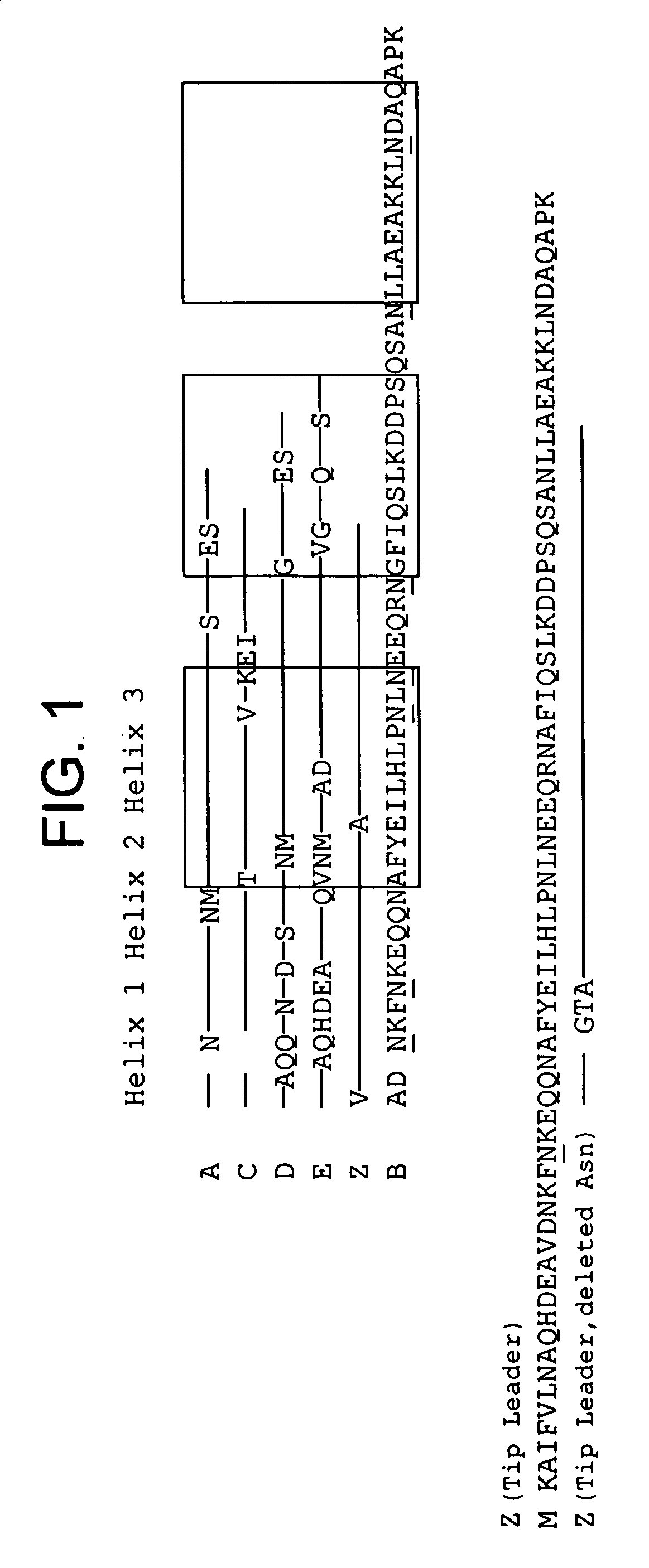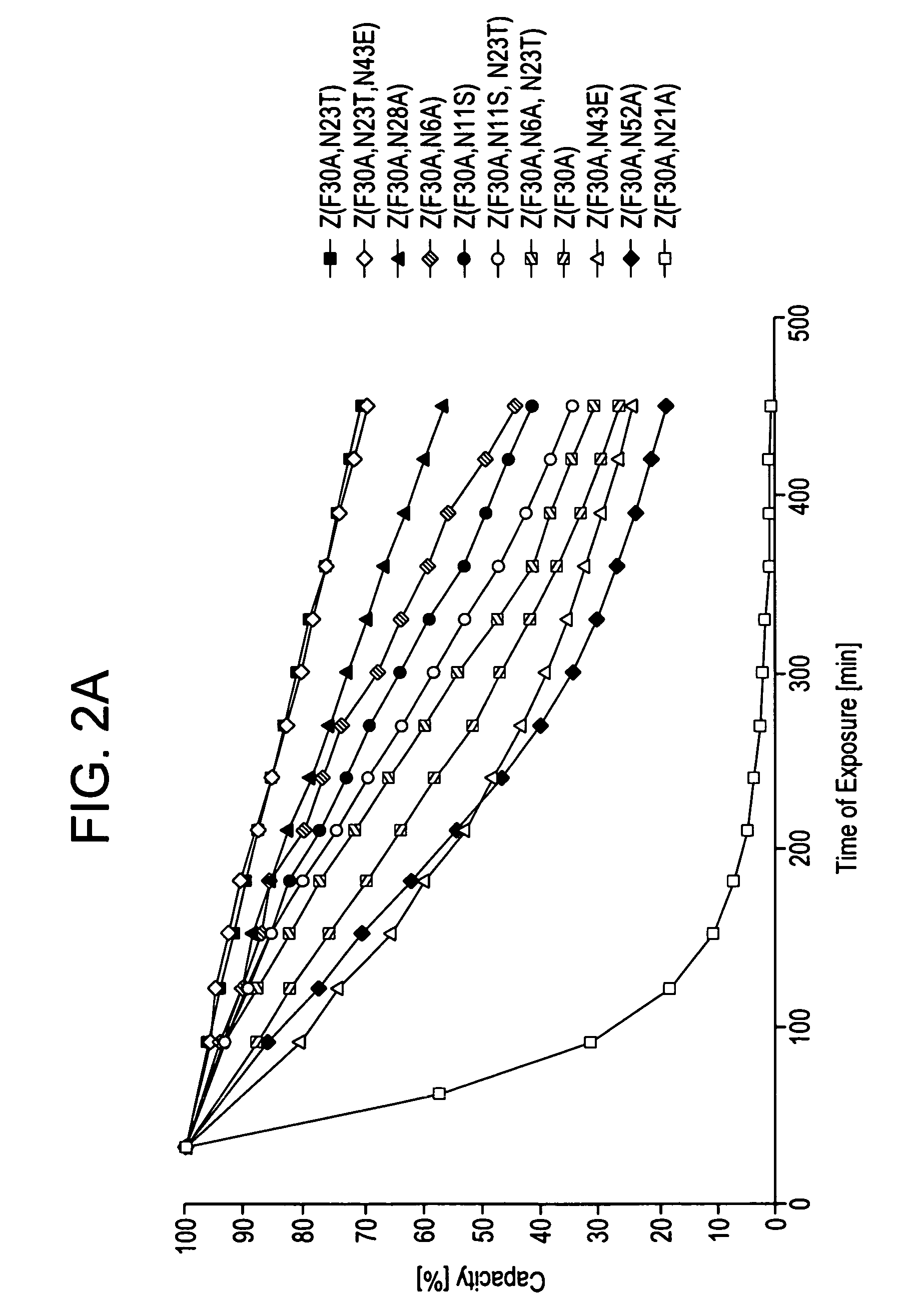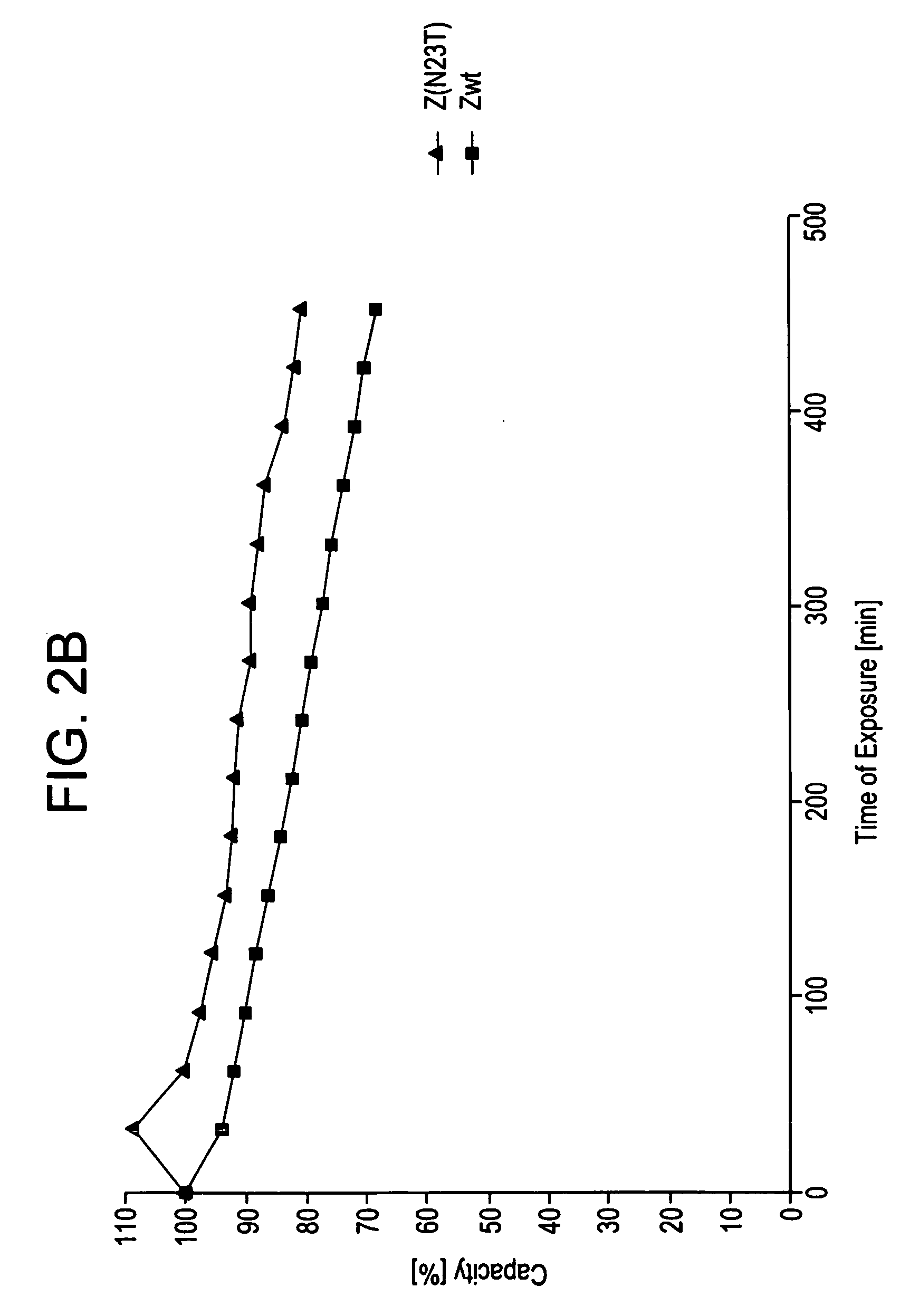Protein ligands
a technology of protein ligands and ligands, applied in the field of mutant proteins, can solve the problems of degrading ligands, affecting the stability of sensitive protein-based ligands, and reducing capacities, so as to increase chemical stability and stability. the effect of stability
- Summary
- Abstract
- Description
- Claims
- Application Information
AI Technical Summary
Benefits of technology
Problems solved by technology
Method used
Image
Examples
example 1
Mutagenesis, Expression and Purification of Mutant Protein Z
[0097] Materials and Methods
[0098] Site-directed mutagenesis was performed using a two-step PCR-technique (Higuchi et al., 1988). Plasmid pDHZF30A (Cedergren et al., 1993) was used as template. Oligonucleotides coding for the different asparagine replacements and the A29G replacement were synthesised by Interactiva (Interactiva Biotechnologie GmbH, Ulm, Germany). The restriction enzymes XbaI and HindIII (MBI Fermentas Inc., Amhurst, N.Y.) were used for cloning into the vector pDHZ (Jansson et al., 1996) that was performed according to Sambrook (Sambrook et al., 1987). To create pTrpZ, the Z domain was amplified by PCR, using plasmid pKNI as template (Nord et al., 1995). The fragment was restricted with XbaI and PstI and ligated into the vector pTrpABDT1T2 (Kraulis et al., 1996) that had been restricted with same enzymes. A MegaBACE 1000 DNA Sequencing System (Amersham Biosciences, Uppsala, Sweden) was used to verify corre...
example 2
Biospecific Interaction Analysis
[0103] Materials and Methods
[0104] Differences in affinity and kinetic constants of the association and dissociation states were detected on a Biacore™ 2000 instrument (Biacore, Uppsala, Sweden). Human polyclonal IgG and HSA (negative reference) were immobilised by amine coupling on the carboxylated dextran layer of a CM5 sensor chip (Biacore) according to the supplier's recommendations. The immobilisation of IgG resulted in approximately 2000 RU. Z, ZF30A, and the different mutants were prepared in HBS (10 mM HEPES, 0.15 M NaCl, 3.4 mM EDTA, 0.005% surfactant P20, pH 7.4) at 10 different concentrations (100-550 nM). The samples were injected over the surfaces as duplicates in random order at a flow rate of 30 μl min−1. 10 mM HCl was used to regenerate the surface. The data was analysed using the BIA evaluation 3.0.2b software (Biacore AB). The signals from a control surface immobilized with HSA were subtracted from the IgG surface. A 1:1 Langmuir m...
example 3
Stability Towards Alkaline Conditions
[0107] Materials and Methods
[0108] The behaviour of the variants of domain Z as affinity ligands was analysed by immobilisation to a standard affinity matrix. Z, Z(F30A), and mutated variants were covalently coupled to HiTrap™ affinity columns (Amersham Biosciences, Uppsala, Sweden) using the N-hydroxysuccinimide chemistry according to the manufacturer's recommendations. The columns were pulsed with TST and 0.2 M HAc, pH 3.1. Human polyclonal IgG in TST was prepared and injected onto the columns in excess. A standard affinity chromatography protocol was followed for 16 cycles on the ÄKTA™Explorer 10 (Amersham Biosciences, Uppsala, Sweden). Between each cycle a CIP-step was integrated. The cleaning agent was 0.5 M NaOH and the contact time for each pulse was 30 minutes, resulting in a total exposure time of 7.5 hours. Eluted material was detected at 280 nm.
[0109] Results (Example 3)
[0110] Z, Z(F30A), and mutants thereof were covalently attache...
PUM
| Property | Measurement | Unit |
|---|---|---|
| pH | aaaaa | aaaaa |
| path length | aaaaa | aaaaa |
| path length | aaaaa | aaaaa |
Abstract
Description
Claims
Application Information
 Login to View More
Login to View More - R&D
- Intellectual Property
- Life Sciences
- Materials
- Tech Scout
- Unparalleled Data Quality
- Higher Quality Content
- 60% Fewer Hallucinations
Browse by: Latest US Patents, China's latest patents, Technical Efficacy Thesaurus, Application Domain, Technology Topic, Popular Technical Reports.
© 2025 PatSnap. All rights reserved.Legal|Privacy policy|Modern Slavery Act Transparency Statement|Sitemap|About US| Contact US: help@patsnap.com



